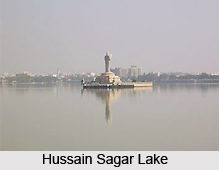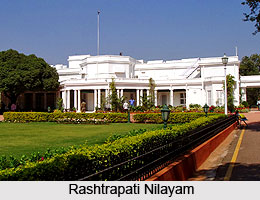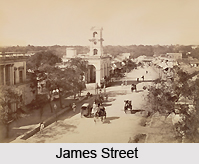 History of Secunderabad covers the rich cultural and architectural history of ancient Hyderabad and the Muslim rule of Hyderabad. Secunderabad is popularly known as the twin city of Hyderabad. This place is located in the Indian state of Telangana. Secunderabad is named after Sikandar Jah, the third Nizam of the Asaf Jahi dynasty in the medieval era.
History of Secunderabad covers the rich cultural and architectural history of ancient Hyderabad and the Muslim rule of Hyderabad. Secunderabad is popularly known as the twin city of Hyderabad. This place is located in the Indian state of Telangana. Secunderabad is named after Sikandar Jah, the third Nizam of the Asaf Jahi dynasty in the medieval era.
Secunderabad, one of the most important town in Telangana, a newly formed Indian state was founded in 1806 as a British cantonment. Although Hyderabad and Secunderabad are together referred to as the twin cities, they have both different histories and cultures, with Secunderabad was developed directly under the rule of British East India Company and later the British Government of India until 1948, the year after the Independence of India and Hyderabad as the capital of Nizam. At that time Hyderabad was known as the Princely State of India.
Early History of Secunderabad
Early History of Secunderabad dates back from the time of Chalukyas of Badami. From that time onwards, Secunderabad was the royal state. The present area around Secunderabad was ruled by the Chalukya Dynasty from 624 AD to 1075 AD. Chalukya Dynasty ruled large parts of South and Central India in the early times. Between the 6th and 8th century AD, the Chalukyas were the visibly dominant rulers in the Deccan including Secunderabad.
 Medieval History of Secunderabad
Medieval History of Secunderabad
Medieval History of Secunderabad began with the advent of Kakatiya Dynasty and the decline of Chalukyas in the 11th Century. In the mid phase of 11th century, Hyderabad and Secunderabad came under the control of the Kakatiya Dynasty (1158-1310), whose seat of power was at Warangal (now Warangal District of Telangana), 148 km northeast of modern Hyderabad. The area around Secunderbad changed hands between various rulers and by 18th century, the area was part of Nizam`s Hyderabad. Later, it came into the hands of British Government in India after the decline of Mughal Empire in India (1707).
Modern History of Secunderabad
Secunderabad was founded as a British cantonment after the Nizam Asaf Jah II was defeated at the hands of the armies of British East India Company. After that he was forced to sign the Treaty of Subsidiary Alliance in the year 1798. He had to sign the Subsidiary Alliance treaty in order to gain the support of the British troops parked in tents in the open areas of the Maidan of the village Ulwul, north-east of Hussain Sagar , the lake that separates Secunderabad from its twin city Hyderabad. Later, in 1803, Nizam Sikandar Jah, the third Nizam of Hyderabad, renamed Ulwul as Secunderabad after himself. The city was formed in 1806, after the order was signed by the Nizam allotting the land north of Hussain Sagar to set up the British Cantonment. The twin cities are separated by the man-made Hussain Sagar lake, which was built during the reign of the Qutb Shahi dynasty in the 16th century. Unlike Hyderabad, the official language of Secunderabad was English. Secunderabad was exempted from customs duty on imported goods thus making trade very profitable. Various new markets such as Regimental Bazaar and General Bazaar were created.
 Secunderabad under Nizam and British Rule
Secunderabad under Nizam and British Rule
After the Sepoy Mutiny of 1857, the construction of a seven metre high wall was started at Trimulgherry and completed in 1867. Secunderabad Railway Station is one of the largest in India which is also the zonal headquarters of South Central Railway that was established in 1874. The King Edward Memorial Hospital, now known as Gandhi Hospital was established in 1851. A Civil Jail (now a heritage building known as Old Jail complex near Monda Market) was also established. During World War II, Sir Winston Churchill, the Prime Minister of the United Kingdom was posted in Secunderabad during the 1890s as a subaltern in the British Army. Sir Ronald Ross conducted his initial research on the cause of malaria in the city of Secunderabad.
Secunderabad after Independence
India got independence in 1947. After that Hyderabad and Secunderabad was taken from Nizams to the Union Government of India. After independence, the Secunderabad Cantonment Board came under the jurisdiction of the Indian Armed forces. Consequently large military units were established. The popular neighbourhoods in Secunderabad are Paradise Circle, Trimulgherry, Marredpally, Sitaphalmandi, Kharkhana, Ranigunj, New Bhoiguda. Begumpet Airport is close to Secunderabad and served as the twin city until early 2008. Now this city of British troops is under the government rule of Telengana.



















